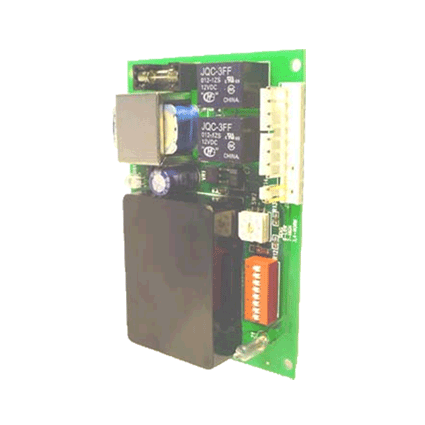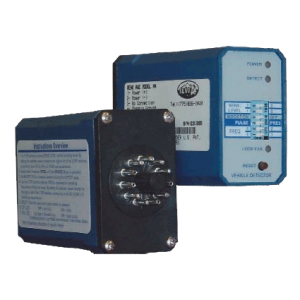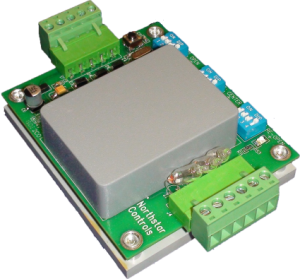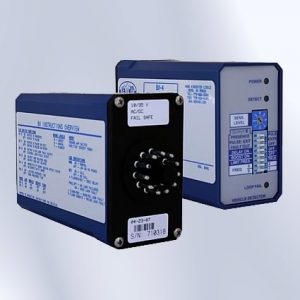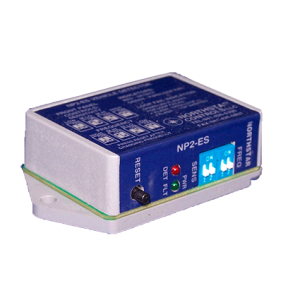Product Description
The NP2-C has been specifically designed and engineered for use in the Parking/Access Control industries. With standard operations including compatibility with all radio controls and more, the NP2-C covers your plug-in detection needs.
The NP2-C’s wide inductance range allows for use with small loops sometimes found in
the Parking/Access Control industries (for recommended loop sizes please consult the LIS, Inc sales team).
A single Bi-Color LED will show power/fault and detect to provide for quick visual verification of proper operation. Reliable operation and long field life are key engineering goals in every Northstar product.
Indicator: (LED) A single Bi-Color LED will show:
- Solid Green, with proper power applied.
- Solid Red during current Detect.
- Blinking Red during current Fault.
Note: Blinking continues until the detector is reset.
Sensitivity Control: (8 position Rotary Switch)
- 7 = Most sensitive (High).
- 4 = Medium (works best for most applications).
- 0 = Least sensitive (Low).
Frequency Control: Switches 1 & 2 on the DIP switch
Frequency Range: 15 -150 KHz
0+0 = Low
2+0 = Medium High
1+0 = Medium Low
2+1 = High
Note: When two or more loops are installed in close proximity to each other, set each detector on different frequency to prevent cross-talk.
Voltage: To verify voltage check label on the black oscillator cover.
A part number ending in:
- 3NH = 120VAC.
- 7NH = 24VAC.
Temperature Range: – 40° to +80° C.
Relay Output Rating: 10A, 277VAC, 24VDC.
Mechanical: 4.5” L x 3.250” W x 1.0” H.
Note: Whenever the detector setting are changed or after a new installation, reset the detector without a vehicle present over the loop.
R71- 416 Setup
DIP Switch Positions
Switches 1 & 2: Provides four (4) different frequency settings
Off/Off = High
On/Off = Med/High
Off/On = Med/Low
On/On = Low
Switches 3 & 4: Provide for four (4) different mode settings
Off/Off = Pulse-on-Entry*
On/Off = Pulse-on-Exit*
Off/On = Presence
On/On = Fault
*Applies to relay # 2 only
Switches 5 & 6: Provide four (4) different Presence lengths.
Off/Off = 8 min.
On/Off = 16 min.
Off/On = 60 min.
On/On = Permanent
Switch 7: Not used
Switch 8: Provides for Fail-safe or fail-secure operation.
Off = Fail-safe
On = Fail-secure*
*(for power on only).
| Factory Settings: The R71 is shipped with all switches in the down (OFF) position. This provides for the following settings: |
| Frequency: |
High |
| Mode Setting: |
Pulse-on-Entry (relay #2) |
| Presence: |
16 minute (both relays) |
| Relay #1: |
Fail-Safe |
| Relay #2: |
Fail -Secure for power |
| R71- 416 Pin Number & Color Code |
| 1 |
Relay 2 Com Blue |
6 |
Relay 1 N.C. White |
| 2 |
Relay 2 N.O. Orange |
7 |
Supply + (Live) Red |
| 3 |
Relay 2 N.C. Yellow |
8 |
Supply – (Neutral) Black |
| 4 |
Relay 1 Com Green=Gnd. |
9 |
Loop Brown |
| 5 |
Relay 1 N.O. Violet |
10 |
Loop Gray |
R71- 416 Installation Tips
- Supply the proper voltage. The Bi-Color LED should be solid GREEN with correct power applied. Over voltage protection is standard with this product. In the event of incorrect voltage the Bi-Color LED will come on briefly and fade out without damage to unit. Check voltage sticker on side of oscillator cover. Reapply correct voltage.
- Solid Red (Bi-Color) LED indicates a current detect. Vehicle or metal object in the field of detection.
- Blinking Red (Bi-Color) LED indicates current fault. Check loop connections (twisted Gray & Brown) to ensure proper, tight connection to loop.
- Sensitivity level 4 will be adequate for most situations. Operate detector at lower sensitivity levels while detecting all desired vehicles.
- Most applications require using the fail-safe relay #1 providing presence (detector stays in detect as long as vehicle is present over the loop, up to presence time limit). Relay #1 Normally Open connections are: Pins 4 & 5, the Green (common) and Violet (N.O.) wires from the wiring harness. These wires are taken to the terminal strip for your desired function.
- For a second output (pulse or presence) relay 2 is used. Commonly the #2 (Orange, N.O.) and #1 (Blue, Common) are used, this will provide a Fail-secure for power output. When using relay 2 select the proper DIP switch settings for your application.




